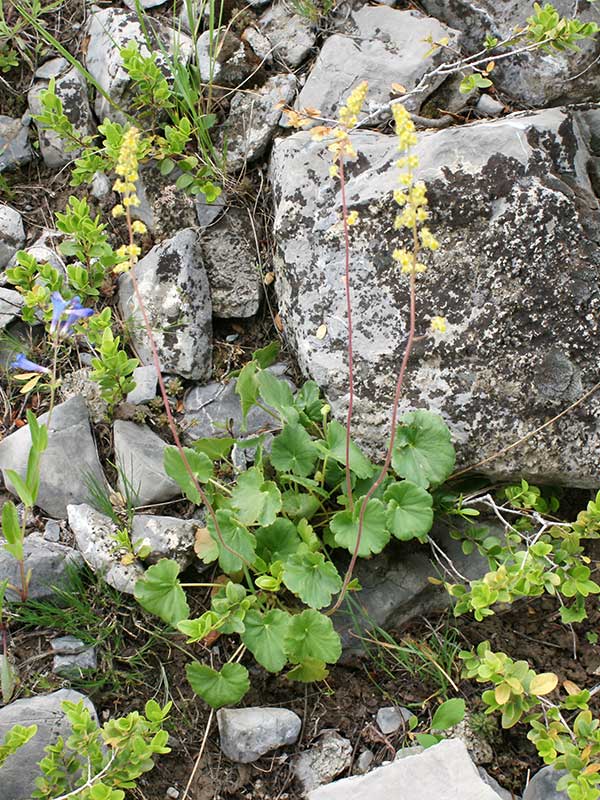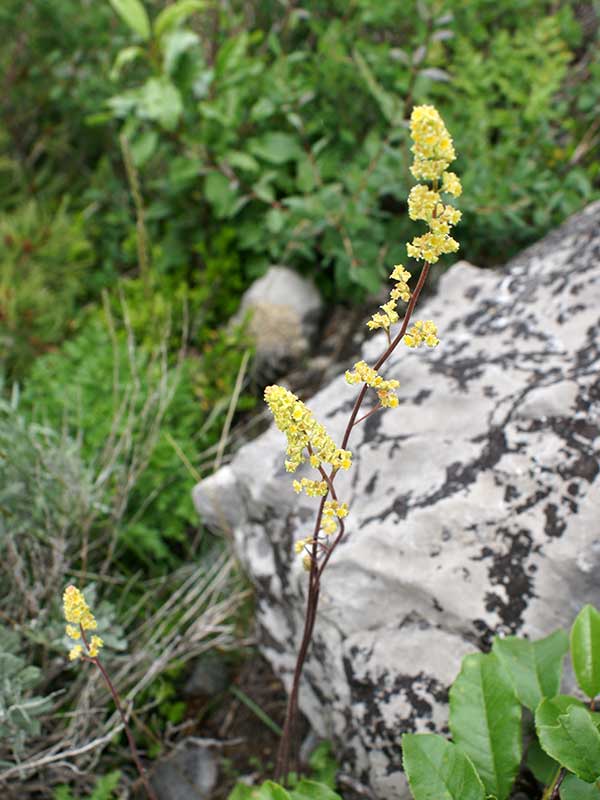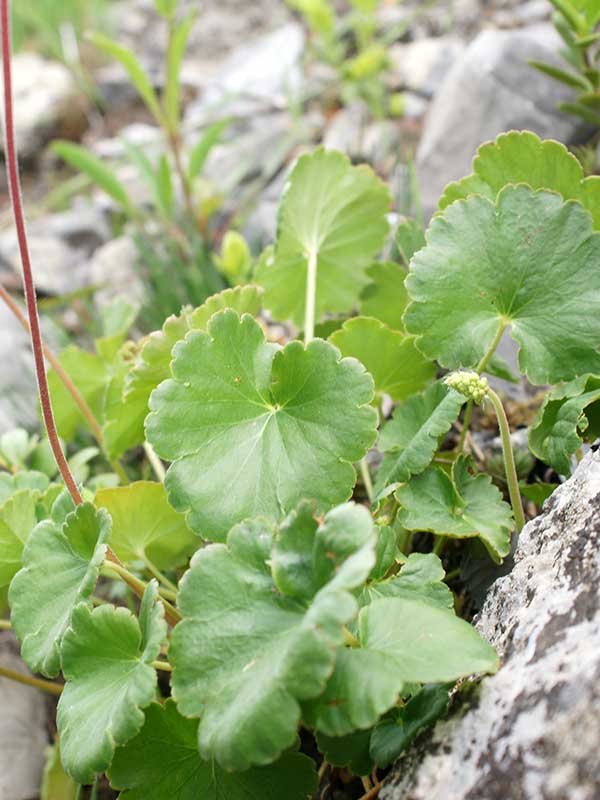Huechera cylindrica / coral bells
- oval-shaped leaves growing in clumps/tufts – all basal
- leaf edges with small lobes or teeth
- teeny pale yellow, creamy, green or pink flowers on a leafless stem
- flowers more dense at top of spike than lower down
- in woods, on cliff-side ledges, rocky slopes and subalpine meadows
Also known as: poker alumroot, poker huechera, roundleaf alumroot
Although the “official common name” of this species is roundleaf alumroot, the garden name is more beautiful, so I’ve gone with that. Coral bells.
Coral bells is an evergreen perennial found in the woods, on cliff-side ledges, rocky slopes and subalpine meadows. It grows as a “tuft” or “clump” from a branching crown and spreads – albeit not far – from thick rhizomes. The leaves are basal, and oval or round, but not distinctly heart shaped. They may be shallowly lobed or toothed. The petioles are long compared to the leaves and may be glandular, or hairy, or quite smooth and shiny, so don’t count on them for identification.
Coral bell flowers appear on an erect and leafless stem that, in good conditions, may be as much as 3 feet tall. In the wild in the Valley, don’t expect that. The flowers are bell-shaped and quite small – indeed, teeny. They can be pale yellow, creamy, green or pink. The individual flowers are usually apetalous, the colors being associated instead with the calyx. The stamens do not extend beyond the end of the bell.
In addition to its clonal growth potential, coral bells grows easily from seed.
Getting back to the more accepted common name, alum root, corral bells roots have high concentrations of tannins and gallic acid, both of which, like the chemical alums (various aluminum sulfates) are strongly astringent. Together, these compounds may make up more than 30% of the roots’ dry weight.
Note: if you sing the round, “White coral bells / along my garden walk,” it is actually about lily-of-the-valley. These two species have nothing in common other than being plants.
| Color | |
|---|---|
| Family | |
| Blossom size | |
| Inflorescence size | |
| Inflorescence type | |
| When? | |
| Where? | bare rocks, coniferous forests, exposed, rocky areas, understory |



